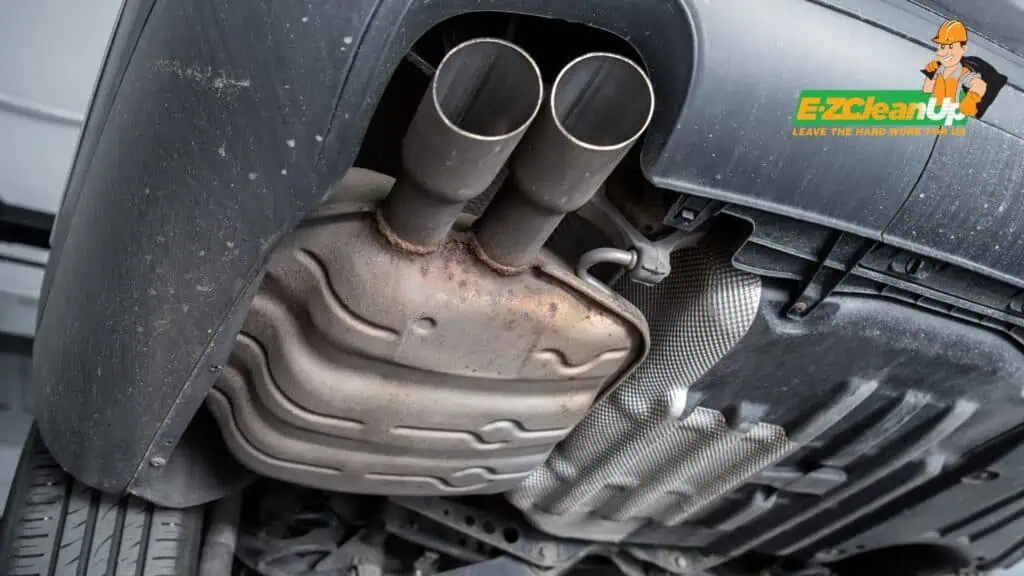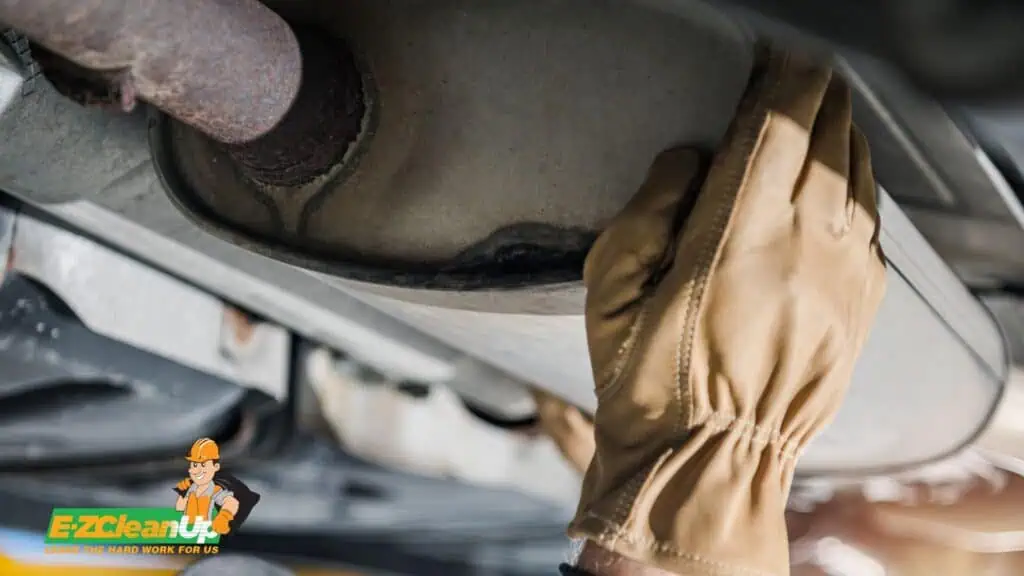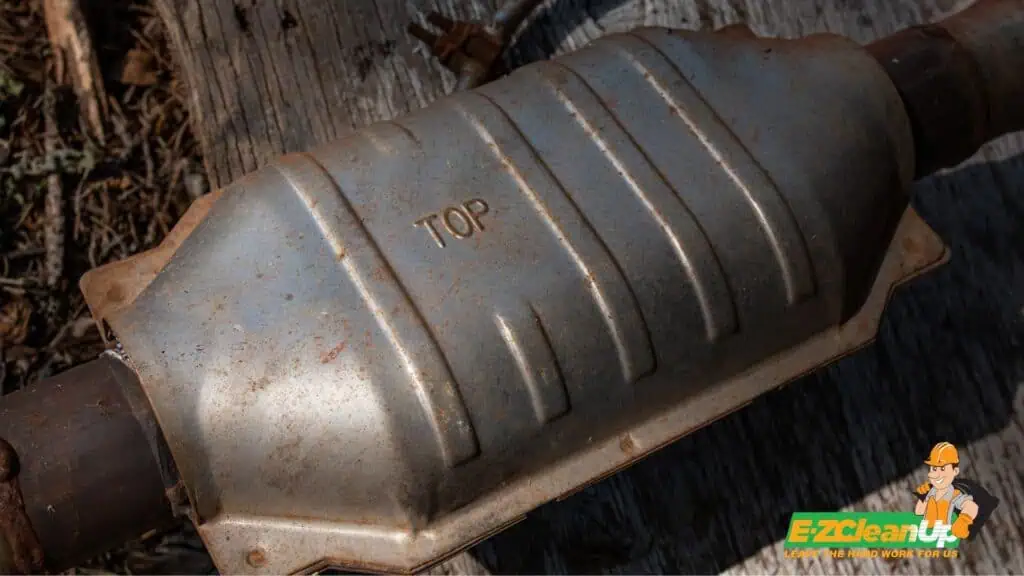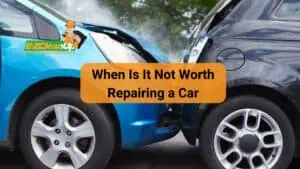Operating a vehicle without a catalytic converter, besides being illegal in many areas, introduces a host of performance, environmental, and mechanical challenges. It’s crucial to consider these factors before deciding to remove or modify the catalytic converter in your vehicle.
Dig in further about the answers to – can you drive without a catalytic converter? Learn about the processes and more in our guide below.
Risks and Penalties Associated with Driving Without a Catalytic Converter
Driving a vehicle without a catalytic converter significantly elevates the emission of harmful pollutants like carbon monoxide, hydrocarbons, and nitrogen oxides, which contribute to air pollution and smog.
These emissions not only degrade air quality but also pose serious health risks, potentially leading to respiratory issues and other health problems due to increased exposure to toxic pollutants.
Catalytic converters play a critical role in enhancing fuel efficiency by ensuring the complete combustion of fuel. The absence of this device can lead to decreased fuel economy. This will require more frequent refueling, which adds to overall vehicle running costs.
Additionally, the lack of a catalytic converter can lead to increased engine wear over time, as unfiltered exhaust gases can damage engine components.

Legal Restrictions and State-Specific Emissions Laws
It is illegal to drive without a catalytic converter in many U.S. states due to stringent environmental protection laws. Vehicles without catalytic converters will fail emissions tests required for vehicle registration renewal.
This can lead to potential legal consequences, including hefty fines, and, in some cases, criminal charges. Fines can range from $50 up to $25,000, and non-compliance might require costly repairs to meet regulatory standards.
California, for example, enforces some of the strictest regulations, prohibiting even the installation of non-certified exhaust components. If your vehicle is found without a catalytic converter, you may face immediate fines and be required to reinstall a compliant converter before the vehicle can be legally driven again.
Immediate Implications of Removing a Catalytic Converter
Removing a catalytic converter can increase a vehicle’s horsepower by reducing exhaust backpressure and allowing for faster expulsion of gases. However, this modification comes with significant downsides.
These include increased emissions of toxic pollutants like hydrocarbons, carbon monoxide, and nitrogen oxides, which can rise up to ten times the levels emitted with a catalytic converter. The removal also leads to louder exhaust sounds.
It can potentially cause noise pollution well above the standard 85 decibels, which can be harmful to human hearing. Moreover, the absence of a catalytic converter can result in increased fuel consumption in some vehicles.
Role of Catalytic Converters in Vehicle Emissions Control
A catalytic converter is a device installed in the exhaust system of a vehicle. Its primary function is to convert harmful pollutants from the engine’s exhaust gases into less harmful emissions before they are released into the atmosphere.
Catalytic converters use a combination of platinum, palladium, and rhodium as catalysts. These precious metals facilitate chemical reactions that transform toxic gases such as carbon monoxide, nitrogen oxides, and hydrocarbons into safer compounds like nitrogen, carbon dioxide, and water vapor.
By converting harmful emissions into less toxic substances, they significantly reduce the output of pollutants that contribute to smog and acid rain. Although catalytic converters are highly effective in reducing harmful emissions, they do not reduce CO2 emissions, which are a primary greenhouse gas.
Consequences of Removing a Catalytic Converter
Removing a catalytic converter can lead to a slight increase in horsepower due to reduced exhaust backpressure. This might seem beneficial, especially for high-performance vehicles where every bit of horsepower counts. However, this modification often results in decreased fuel efficiency.
The engine may consume more fuel because it no longer operates at the optimized conditions designed with the catalytic converter in place. Additionally, the removal of the converter disrupts the precise control over the air-fuel mixture managed by the vehicle’s onboard computer, potentially leading to inefficient combustion and further reducing fuel economy.
Environmental Consequences of Increased Emissions
Catalytic converters play a crucial role in reducing harmful emissions such as carbon monoxide, nitrogen oxides, and hydrocarbons. These substances contribute to air pollution and have adverse effects on public health and the environment.
Without the converter, a vehicle will emit higher levels of these pollutants, which contribute to smog, acid rain, and respiratory problems in humans. Thus, driving without a catalytic converter significantly worsens the vehicle’s environmental footprint.

Potential for Damage to Other Vehicle Components
The absence of a catalytic converter can also lead to damage to other parts of the vehicle’s exhaust system. For instance, the increased exhaust temperatures and unfiltered emissions can deteriorate the exhaust manifold and exhaust pipes more quickly.
Furthermore, the O2 sensors, which rely on readings affected by the converter, may provide inaccurate data to the engine’s computer. This misinformation can lead to improper engine functioning, potentially resulting in costly repairs and a reduced lifespan of engine components.
Operating a vehicle without a catalytic converter, besides being illegal in many areas, introduces a host of performance, environmental, and mechanical challenges. It’s crucial to consider these factors before deciding to remove or modify the catalytic converter in your vehicle.
Detecting and Diagnosing Catalytic Converter Issues
Identifying issues with a catalytic converter early can prevent more severe damage to your vehicle. Common symptoms include:
- Reduced Engine Performance: Your car may experience sluggish acceleration and reduced power output.
- Increased Emissions: A failing converter often leads to higher emissions of harmful pollutants, noticeable through a failed emissions test.
- Check Engine Light: This light may illuminate on your dashboard as a direct result of catalytic converter inefficiencies.
- Unusual Noises: Rattling sounds from the exhaust system can indicate loose or damaged components within the converter.
- Sulfur Smell: A rotten egg-like smell from your exhaust is a telltale sign of converter issues due to unconverted sulfur compounds in the gasoline.
Diagnostic Tools and Check Engine Light Indicators
To accurately diagnose catalytic converter problems, using On-Board Diagnostics II (OBD-II) scanners is crucial. These tools can read specific diagnostic trouble codes related to catalytic converter efficiency, such as P0420 or P0430, indicating reduced functionality.
Oxygen sensor performance is also crucial; improper readings might suggest converter issues. Regular physical inspections and emission readiness checks also play essential roles in a comprehensive diagnostic approach.
When to Seek Professional Diagnosis and Repair
It’s advisable to consult with a professional technician if you notice any of the symptoms mentioned. They can perform detailed diagnostics using specialized tools and provide an accurate assessment of the catalytic converter’s condition.
Depending on the diagnosis, solutions may range from cleaning the converter to a complete replacement. Ensuring that the catalytic converter is functioning correctly is vital for your vehicle’s performance and adherence to environmental standards.
Solutions and Preventative Measures
When it comes to replacing a catalytic converter, vehicle owners have several options. They can choose between original equipment manufacturers (OEM) and aftermarket converters.
OEM converters are generally more expensive but offer high compatibility and performance tailored specifically for the vehicle model. Aftermarket converters provide a more cost-effective solution but can vary in quality.
Universal converters are flexible and inexpensive but may require custom installation, while direct-fit converters are vehicle-specific, offering easier installation and better performance.
Installing Anti-Theft Devices for Catalytic Converters
To combat the high rate of catalytic converter thefts, various anti-theft devices are available. Popular options include:
- Catalytic Converter Alarms: These alarms can deter thieves by emitting loud noises when tampering is detected. They are affordable and easy to install.
- Catalytic Converter Locks: Devices like the CatClamp lock the converter to the vehicle, making theft more difficult. These are effective but may be pricey and require complex installation.
- Protection Shields: Made from durable materials like aluminum, these shields cover the converter, making access by thieves challenging. They are also designed to dissipate heat effectively.
Ensuring Compliance with Local Emission Standards
To ensure compliance with local emissions standards, it’s crucial for vehicle owners to use catalytic converters that meet or exceed the regulatory requirements. This not only helps in maintaining air quality but also ensures that the vehicle passes mandatory emissions tests.

Converter Complications? EZ Can Help
Dealing with a vehicle that lacks a proper catalytic converter introduces a series of mechanical and legal headaches. For many, the cost of repairs and the risk of non-compliance with emissions laws make such situations frustrating.
EZ CleanUp offers a straightforward solution to these complex problems. We specialize in removing most types of junk, including old mattresses, e-waste, and more. Plus, we also pay cash for junk cars, even those that are non-compliant due to missing catalytic converters.
Contact us for a hassle-free way to handle your junk car.













